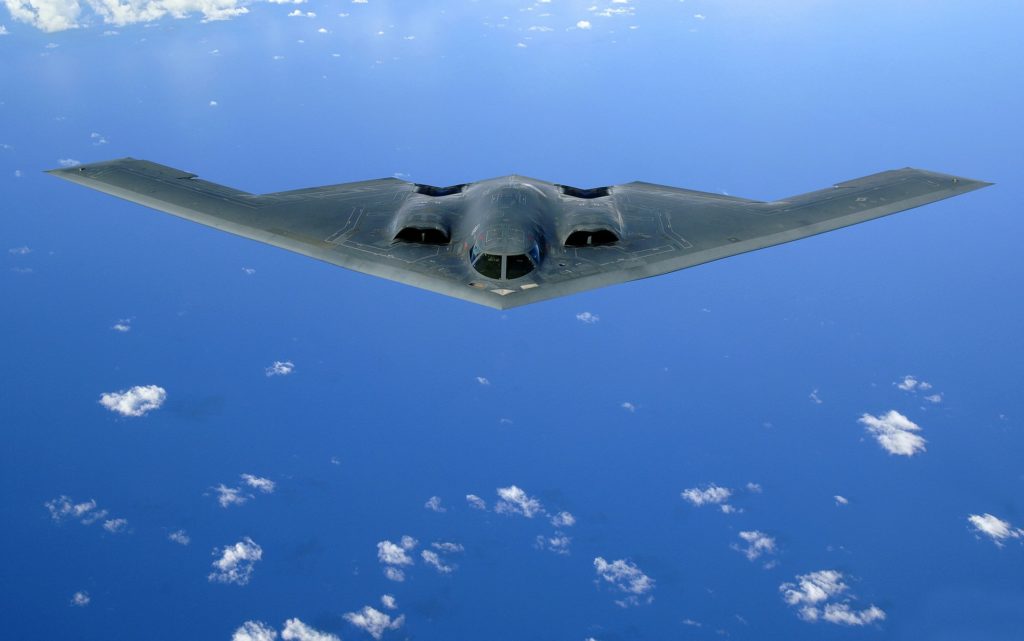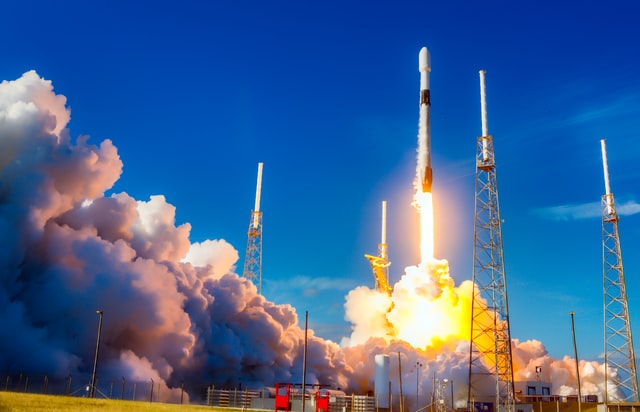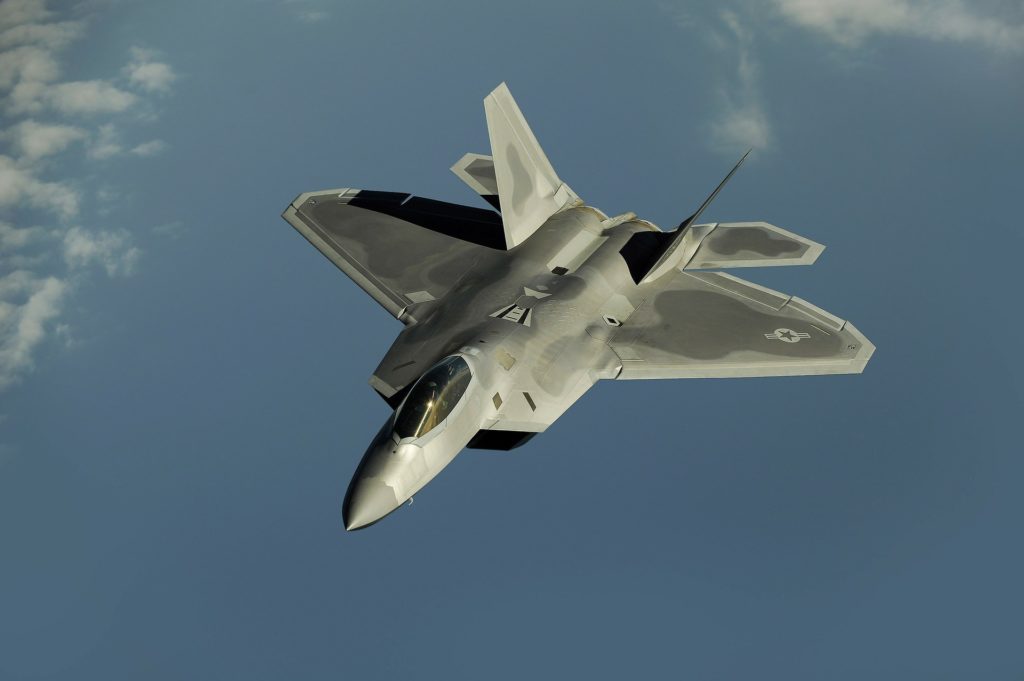As of date, the Biden-Harris administration has requested $752.9 billion – $715 billion going towards the DOD (Department of Defense) regarding the Defense Budget of 2022. The move shows the Biden-Harris administration to invest in newer technology such as space and aircraft systems for the sake of national security.
A few advancements in technology we expect, not only in the defense industry, but worldwide:
- Artificial Intelligence
- Cybersecurity
- Machine Learning
- Augmented Reality
- Robotics
It’s interesting to follow what the defense budget consists of because we see the where funding for the advancement of technology is headed, backed by the money! Often times, the above items, such as Artificial Intelligence and Machine Learning are widely talked about. As we all know, follow the money and as a result, we find where innovation occurs.
February 29, 2024Defending The Nation – $6.2 billion

- COVID Relief – $500 million
- Pacific Deterrence Initiative – $5.1 billion
- Adapting and Mitigating Climate Change – $617 million
An interesting note to take here is how COVID relief is distributed between sectors since we see COVID relief being allocated some money. The above just looks at defense, but the stimulus package has provided funds between different industries and defense was allocated $500 million.
Innovation and Modernization – $27.7 billion

- B-21 Long Range Strike Bomber – $3 billion
- COLUMBIA Class Ballistic Missile Submarine – $5 billion
- Long-Range Stand-Off (LRSO) Missile – $609 million
- Ground Based Strategic Deterrent (GBSD) – $2.6 billion
If you look at the numbers, you can see these are billions of dollars we are spending towards new technology such as B-21, COLUMBIA, GBSD. As a result of the demand for this technology, big defense contractors are going to get busy! Know that much of this technology is very old, so innovation and modernization also includes implementing newer systems with these programs such as utilizing CAD and PLM software as back in the day, there was no CAD, just pen and paper. Because technology has advanced so much since the emergence of these initial systems, it is important to maintain best practices overall. As a result, companies are geared towards digital transformations.
Missile Defeat and Defense – $20.4 billion

- Sea-Based Interceptors (SM-3 IIA and SM-3 IB) – $647 million
- Sea-Based Ballistic Missile Defense System (AEGIS BMD) – $1 billion
- Ground-Based Midcourse (GMD) and Improved Homeland Defense/Next Generation Interceptors (NGI) – $1.7 billion
- Terminal High Altitude Area Defense (THAAD) Ballistic Missile Defense – $562 million
- Patriot Advanced Capability Missile Segment Enhancement – $777 million
Lots of investing in new technology we see here and because of that we don’t see work in missile systems and interceptors slowing down! As a result, we can see the engineering regarding missile systems will continue to improve and become more efficient.
Long Range Fires – $6.6 billion
Science and Technology and Advanced Capability Enablers
- Largest ever RDT&E request – $112 billion
- Science and Technology – $14.7 billion
- Microelectronics – $2.3 billion
- Artificial Intelligence – $874 million
- 5G – $398 million
Key investments include investments in Artificial Intelligence (AI) and 5G. As we discussed earlier, day by day, we hear more about AI. It is very clear that AI will be a huge proponent in the future, driving innovation and growth. Companies are also incentivized to increase operational efficiency, so investing AI is a must. Because AI will drive increases in operational efficiency, companies will save money and reduce overhead cost. As a result, companies will start being able to reduce overhead. If you’re reading this, do everything you can to grow your skill set because AI is coming.
Lethal Air Forces – $52.4 billion

- 85 F-35 Joint Strike Fighters – $12 billion
- 14 KC-46 Tanker Replacements – $2.5 billion
- 9 CH-53K King Stallion – $1.7 billion
- 12 F-15EX – $1.5 billion
- 30 AH-64E Apache Attack Helicopters – $825 million
Here we see continued investment towards air forces such as the F-35, which gives more work for big defense contractors such as Lockheed Martin and Northrop Grumman. From the funding, we see that work in aircraft will still be continuing.
Combat Effective Naval Forces – $34.6 billion

- COLUMBIA Class Ballistic Missile Submarine – $5 billion
- CVN-78 FORD Class Aircraft Carrier – $2.9 billion
- 2 Virginia Class Submarines – $6.9 billion
- DDG-51 Arleigh Burke Destroyer – $2.4 billion
- Frigate (FFG(X)) – $1.3 billion
- Fleet Replenishment Oiler (T-AO) – $853 million
- Unmanned Surface Vessels (USV) (Large) – $203 million
- 2 Towing, Salvage, and Rescue Ships (T-ATS) – $184 million
- 1 Ocean Surveillance Ship (T-AGOX(X)) – $434 million
Ballistic missiles are a big investment, therefore the Defense Budget is shifting focus through combat effective naval forces / innovation and modernization. Again here we see the focus on missile funding, which as a result will drive growth.
Combat Effective Ground Forces – $12.3 billion
- 3,799 Joint Light Tactical Vehicles – $1.1 billion
- 70 M-1 Abrams Tank Modifications/Upgrades – $1 billion
- 92 Amphibious Combat Vehicles – $613 million
Space and Space Based Systems – $20.6 billion
- 5 Launch Vehicles – National Security Space Launch (NSSL) and Rocket System Launch Program (RSLP) – $1.7 billion
- Global Positioning System (GPS) Enterprise – $1.8 billion
- Space Based Overhead Persistent Infrared (OPIR) Systems – $2.6 billion
Here we can see a few of space-based programs outlined in the budget, which goes to show that the US is very invested in Space. As a result, work in Space contractors will grow.
Cyberspace Activities – $10.4 billion

Cybersecurity is a big industry to pay attention to, as malicious hackers become more competent and threatening, it is an important investment for the sake of national security. As discussed earlier, cybersecurity is one of the more critical sectors for any nation to focus on. Some examples of threats to cybersecurity include viruses, trojans, worms, backdoors, and logic bombs – all of which are nasty and need to be properly addressed.
Divestments of Older Programs – $2.8 billion
- Army: Divests night vision imaging system, missile launcher, electronic warfare, and IT – $47.8 million
- Navy: Decommissions ships (CG, LSD, LCS) and divests aircraft (F/A-18 A-D, RQ-21) – $1.3 billion
- Air Force: Divests aircraft (A-10, F-15 C/D, F-16 C/D, KC-135, KC-10, C-130H, E-8, RQ-4 block 20 and 30) – $1.4 billion
- USSOCOM: Divests select intelligence, surveillance, and reconnaissance (ISR) programs- $117.9 million
Readiness and Modernizes – $122.1. billion
- Army readiness – $27.8 billion
- Navy and Marine Corps readiness – $48.5 billion
- Air Force readiness – $36.5 billion
- Special Operations Command readiness – $9.4 billion
Funds to Service Members, Families, Civilian Workforce

- 2.7% pay raise for military and civilian personnel
- Quality, affordable child care for over 160,000 children
- DOD Dependent Schools educating over 74,000 students
If you’re wondering what the pay raises for military and civilian personnel were, it comes down to about 2.7%. Roughly speaking, inflation is generally about 3%, but the yearly CPI inflation calculator shows 5.4%. With raises lower than what the calculated value of inflation is, these people end up losing money.
However, it’s great to see focus on child care and education as we want to shape the future of the US in a positive manner. Because education is so important for the foundation of our youth, it is a wise investment.
Facilities Improvement and High Quality Housing – $25 billion
- Military construction and family housing – $10 billion
- Facilities sustainment, restoration, and modernization (FSRM) – $15 billion
Investing in Critical Supply Chains, US Manufacturing, and Small Businesses – $1 billion
- Boosting the defense industrial base and bring critical supply chains back to the U.S., including rare earth elements and microelectronics – $341 million
- Investments to accelerate DOD’s response to climate change, which effects nearly every aspect of DOD missions, facilities, and operations – $617 million
- Global health and medical research investments to fight COVID and prepare for future pandemics
Along with innovations in technology, the world is also focused on combatting climate change, as this can be clearly be seen in defense. COVID-19 also has us preparing for future pandemics – if COVID-19 has taught us anything, it’s that anything can happen. A global pandemic can happen out of nowhere, and it is important that the US is prepared for such possibilities.
A focus on providing aid for smaller businesses is present, as it is important for infrastructure that small businesses are doing well.
What Does An Increase In The Defense Budget Mean For You?
Work in defense is not slowing down, as we can see a lot of funding diverted through various programs. The global pandemic has really hurt the global economy, so it’s great to see efforts being shifted towards relief – especially manufacturing and small businesses. Manufacturing and small businesses have been hurt the most economically out of all sectors, so focus towards those sectors is key for economic recovery. Because of potential threats such as China, North Korea, Russia, and tensions in the Middle East, the US cannot afford to let up their efforts on defense.
From a compensation standpoint, increases are not much, at a 2.7% vs. 5.4% inflation rate. Because the raise is lower than inflation rate, sadly, employees in this sector can expect to lose money. Purchasing power goes down when raises are below inflation, so one can buy less with their money. This goes for things like assets, food, water, and anything we need to survive. Because things are getting so expensive, one thing we can all do to save ourselves money is to buy non-perishables in bulk.
We also the money shifting in sectors such as AI, Machine Learning, and cybersecurity, so career openings that incorporate the three will start coming up. The need for better technology is developing, so we see the world gearing up to meet these requirements!
About the author

Kazuyoshi Fujimoto, PE
Founder | Engineering Career Coach | Principal Mechanical Engineer
Kazu oversees all of ultmeche’s engineering services. He provides consulting such as resume reviews, rewrites, mock interviews, and all services career related. Additionally, Kazu performs consulting work regarding Oil & Gas, Automotive, and Aerospace & Defense. Kazu is licensed as a professional engineer in the state of California and has 9+ years of experience in Oil & Gas, Automotive, and Aerospace & Defense.

1 thought on “Defense Budget 2022 Summary”